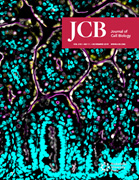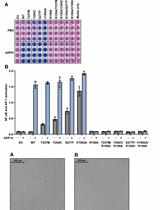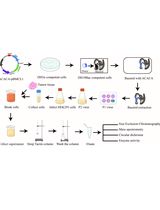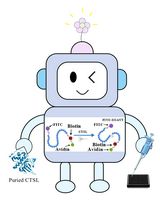- EN - English
- CN - 中文
Colorimetric RhoB GTPase Activity Assay
比色法测定RhoB-GTPase活性
发布: 2020年05月05日第10卷第9期 DOI: 10.21769/BioProtoc.3609 浏览次数: 5062
评审: Chiara AmbrogioFrancisco M. VegaWilliam Jennings Valentine
Abstract
The Ras homologous protein (Rho) GTPase subfamily, including RhoA, RhoB, and RhoC are small molecules (~21 kDa) that act as molecular switches in a wide range of signaling pathways to orchestrate biological processes associated with both physiological and tumorigenic cellular states. The Rho GTPases are crucial regulators of actin cytoskeleton rearrangements and FA dynamics and are required for effective cell migration and invasion, as well as cell cycle progression and apoptosis. The Rho GTPases activity is regulated by conformational switching between GTP-bound (active) and GDP-bound (inactive) states. This GTP/GDP cycling is tightly controlled by the guanine nucleotide exchange factors (GEFs), which function as activators by catalyzing the exchange of GDP for GTP and by the GTPase-activating proteins (GAPs), which enable hydrolysis of GTP leading to the Rho GTPase inactivation. Here, we describe a detailed protocol to perform a RhoB G-LISA activation assay to detect the level of GTP-loaded RhoB in vitro. This is the first colorimetric assay designed to specifically measure RhoB activation. This method was developed by adapting the RhoA G-LISA Activation Assay Kit (Cytoskeleton, Inc.) and allow the precise measurement of RhoB activity in less than 3 hours. This rapid methodology can be broadly used to assess the level of GTP-loaded RhoB in any kind of cellular models, to appreciate either the role RhoB activation in physiological processes, diseases, oncogenic transformation or for drug discovery in high throughput screens.
Keywords: Rho GTPases activity (Rho家族的小分子鸟苷酸三磷酸酶活性)Background
Although the Rho GTPases RhoA, RhoB, and RhoC share more than 85% amino acid sequence identity, they play distinct roles in tumorigenesis by interacting with different signaling pathways. While the contributions of RhoA and RhoC in tumor development have been detailed in numerous studies, the role of RhoB in cancer progression remains unclear. RhoB controls several fundamental processes such as cell morphology, motility, adhesion, intracellular transport, as well as cell proliferation and mitosis (Spiering and Hodgson, 2011; Ridley et al., 2003; Ju and Gilkes, 2018; Zaoui et al., 2019; Svensmark and Brakebusch, 2019). The role of RhoB in tumorigenesis appears to be complex, as it is likely that RhoB functions in a contextual manner, responding to specific signals in the tumor microenvironment (Mazieres et al., 2004). In addition, RhoB possesses several features that are not found in other Rho GTPases. While the small Rho GTPases are generally localized in the cytoplasm and in response to stimuli, translocate to the plasma membrane, RhoB localizes not only at the plasma membrane and the cytoplasm, but also on endosomes and multivesicular bodies (Wheeler and Ridley, 2004; Vega and Ridley, 2018; Zaoui et al., 2019). In addition, RhoB has a “GCI” (glycine, cysteine, and isoleucine) tripeptide, localized in the hypervariable C-terminus domain (residues 188-190) (Wang and Sebti, 2005). Palmitoylation of cysteine in this tripeptide regulates RhoB stability and RhoB subcellular localization (Perez-Sala et al., 2009). These unique features contribute to the diversity and potentially opposing functions of RhoB in an oncogenic context. In vitro, GTPase assays are extensively used to study general Rho GTPases properties, cycling between active and inactive states, as well as protein expression, and stability. Our studies aim at understanding the role of RhoB GTPase activity on cancer cell signaling regulating cytoskeletal rearrangement, cell migration, and invasion. The Colorimetric RhoB GTPase Activity Assay described herein presents a method to study activation of the RhoB GTPases in these multistep processes, crucial for cancer cell dissemination and metastatic colonization. This methodology may have substantial value in monitoring the level of GTP-loaded RhoB in various contexts such as fundamental research on cell motility as well as therapeutic compounds development.
Materials and Reagents
- Paper towel (Staples MMP®, catalog number: DUSPA350RKL )
- 6-well plate (Nunc®, catalog number: 140675 )
- Microcentrifuge tubes: 1.5 ml (Axygen Corning®, catalog number: MCT-150-C )
- HeLa cell line (ATCC® CCL-2)
- Hepatocyte growth factor, HGF (Genentech, Inc.)
- G-LISA® RhoA Activation Assay (cytoskeleton, Inc., catalog number: BK124 ) (Figure 1)
- DMEM–Dulbecco's Modified Eagle Medium (Gibco®, catalog number: 11966025 )
- Rat tail collagen I (Roche®, catalog number: 11179179001 )
- Foetal Bovine Serum (FBS) (Gibco®, catalog number: 26140079 )
- RhoB-specific antibody (Santa Cruz Biotechnology, sc-8048)
- Bradford Protein Assay (Bio-Rad®, catalog number: 5000006 )
- Triton X-100 (Sigma-Aldrich®, catalog number: 93443 )
- Tris (Wisent Inc., catalog number: 600-125-IK )
- HCl (Sigma-Aldrich®, catalog number: 320331 )
- NaCl (Wisent Inc., catalog number: 600-082-IK )
- MgCl2 (Sigma-Aldrich®, catalog number: M1028 )
- Deoxycholate (Sigma-Aldrich®, catalog number: D6750 )
- SDS (Sodium dodecyl sulfate) (Wisent Inc., catalog number: 800-100-LG )
- Glycerol (Sigma-Aldrich®, catalog number: G7893 )
- Dithiothreitol (DTT) (Bio-Rad®, catalog number: 1610611 )
- Protease inhibitors cocktail (Roche cOmplete®, catalog number: 11697498001 )
- Phosphate-buffered saline (PBS) (Wisent Inc., catalog number: 311-012-LL )
- Lysis buffer (see Recipes)
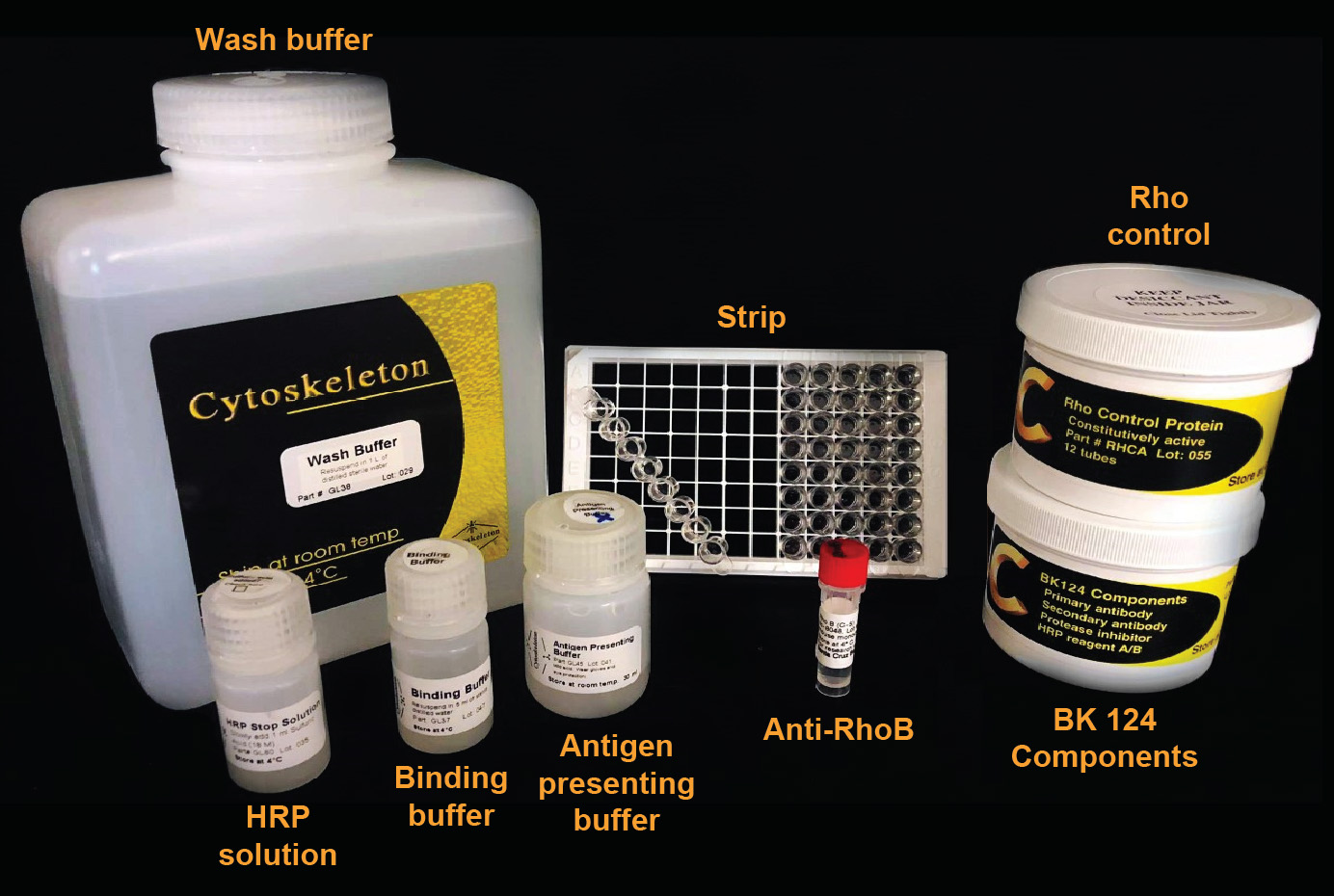
Figure 1. Reagent for the colorimetric RhoB GTPase activity assay. Wash buffer, Binding buffer, Antigen presenting buffer, RhoB primary antibody, HRP-labeled secondary antibody, Rho-GTP affinity wells (strips and strip holder), Rho control and BK 124 component from G-LISA® RhoA Activation Assay (Cytoskeleton, Inc.).
Equipment
- Strip holder (Cytoskeleton®, catalog number: BK124 )
- Cell scraper (Sarstedt®, catalog number: 83.1832 )
- Cell incubator Steri-Cycle CO2 (Thermo Fisher Scientific®, catalog number: 51030303 )
- Varioskan Flash Spectral Scanning Multimode reader at 490 nm (Thermo Fisher Scientific®, catalog number: 5250030 )
- Centrifuge (Eppendorf®, catalog number: 5424/5424R )
- Orbital Shaker (Labline®, model: Labline 3508 Dual Action Shaker )
- GENESYSTM 10S Vis Spectrophotometer at 595 nm (Thermo Fisher Scientific®, catalog number: 840-208200 )
- Multi-channel pipettor (Eppendorf®, catalog number: 3122000060 )
Software
- Microsoft Excel®
Procedure
文章信息
版权信息
© 2020 The Authors; exclusive licensee Bio-protocol LLC.
如何引用
Readers should cite both the Bio-protocol article and the original research article where this protocol was used:
- Zaoui, K. and Duhamel, S. (2020). Colorimetric RhoB GTPase Activity Assay. Bio-protocol 10(9): e3609. DOI: 10.21769/BioProtoc.3609.
- Zaoui, K., Rajadurai, C. V., Duhamel, S. and Park, M. (2019). Arf6 regulates RhoB subcellular localization to control cancer cell invasion. J Cell Biol 218(11):3812-3826.
分类
癌症生物学 > 癌症生物化学 > 蛋白质
生物化学 > 蛋白质 > 活性
您对这篇实验方法有问题吗?
在此处发布您的问题,我们将邀请本文作者来回答。同时,我们会将您的问题发布到Bio-protocol Exchange,以便寻求社区成员的帮助。
Share
Bluesky
X
Copy link



